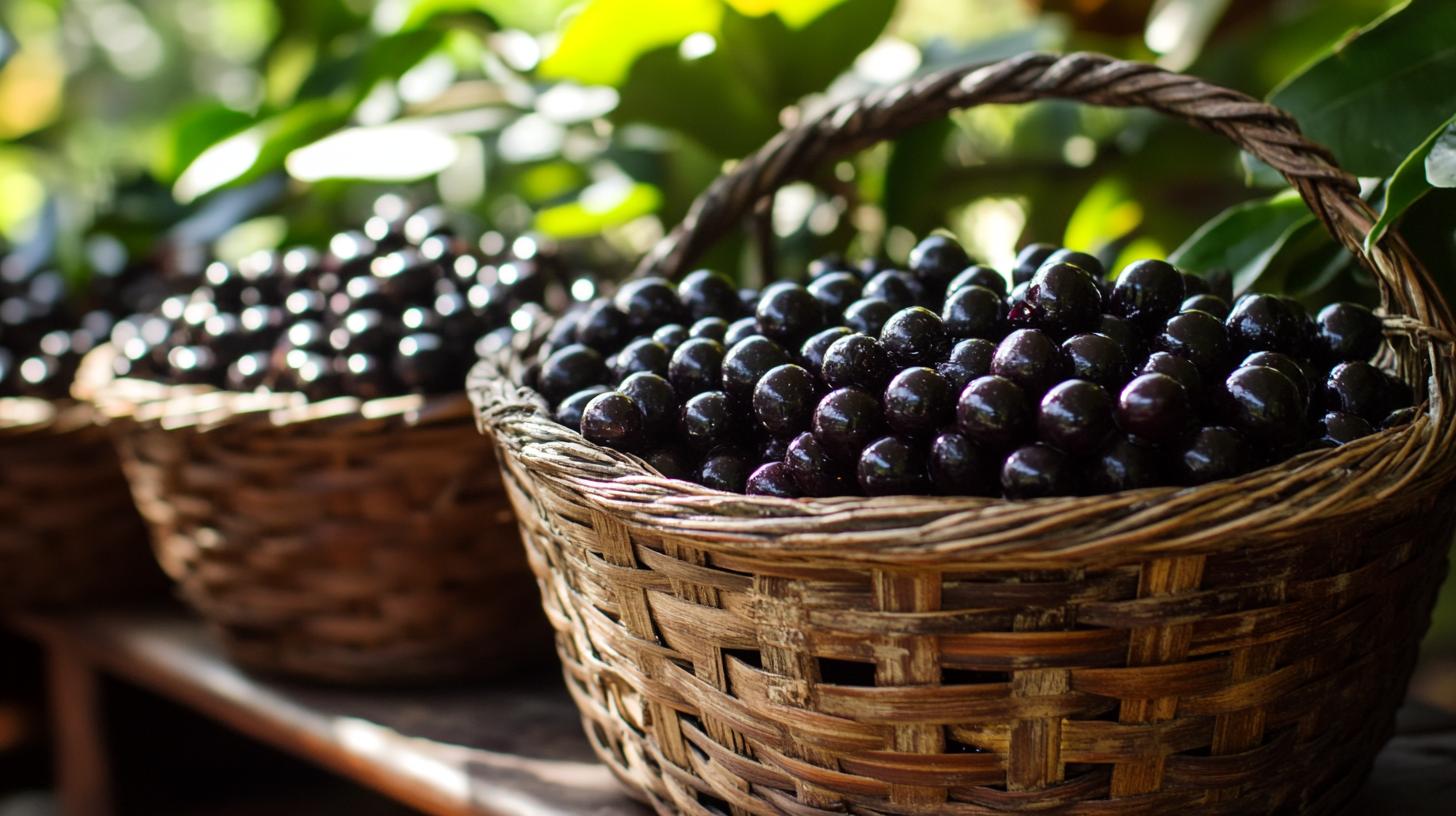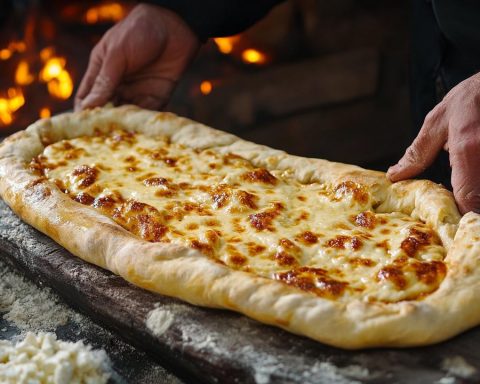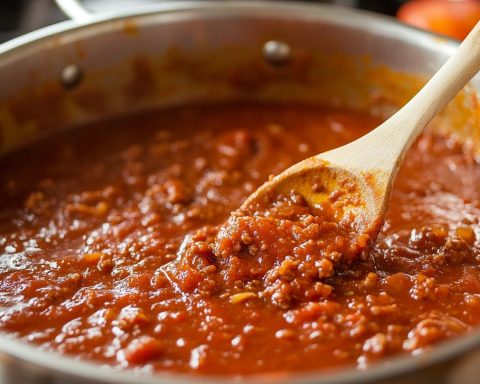Let yourself be transported to the luscious orchards of Brazil with this exquisite jaboticaba jam, a culinary treasure cherished for generations. Imagine the glossy, dark purple jaboticaba fruits, reminiscent of grapes, growing directly on the tree trunks and branches—a mesmerizing spectacle that enthralls those who wander through the tropical wonders of South America. This unique fruit, with its sweet, floral taste and tart undertones, is not only a treat for your taste buds but also packed with antioxidants, making it a healthy addition to your pantry. Jaboticaba jam is perfect for spreading on warm toast for breakfast, adding a gourmet touch to your cheese board, or even using as a glaze for roasted meats. Join in on this delicious tradition and create your own jar of jaboticaba jam, which promises to be as nourishing as it is delightful.
Ingredients:
– 1 kg of fresh jaboticaba fruits
– 500 g of granulated sugar
– 1 cup of water
– Juice of 1 large lemon
– 1 vanilla pod (optional)
Instructions:
1. Prepare the Jaboticabas: Begin by thoroughly washing the jaboticaba fruits under cold water to remove any impurities. Drain them and remove any stems or leaves.
2. Cook the Fruits: Place the cleaned jaboticabas in a large saucepan. Pour in the cup of water and bring to a simmer over medium heat. Allow the fruits to cook until their skins burst open, releasing their juicy flesh. This should take about 15-20 minutes.
3. Extract the Juice: Once the skins have burst, use a potato masher or a spoon to further crush the fruits in the pot, helping to release more juice and pulp.
4. Strain the Mixture: Carefully strain the mixture through a fine-mesh sieve into another pot. Use the back of a ladle to press down the solids, extracting as much juice as possible. Discard the solids.
5. Sweeten the Juice: Add the granulated sugar and lemon juice to the strained jaboticaba juice. If you’re opting for a hint of vanilla, slice the vanilla pod lengthwise and scrape out the seeds. Add both the seeds and the pod to the pot.
6. Cook the Jam: Place the pot over medium-high heat, stirring occasionally to dissolve the sugar. Once dissolved, increase the heat and bring the mixture to a rolling boil. Continue boiling for about 20-25 minutes or until the mixture thickens to a jam-like consistency. To check, drop a spoonful of jam on a cold plate—if it gels slightly and wrinkles when you run a finger through it, it’s ready.
7. Jar the Jam: Remove the vanilla pod, if used. Carefully ladle the hot jam into sterilized jars, leaving some headspace at the top. Seal the jars immediately and turn them upside down for a few minutes to ensure a good seal.
Cooking Tips:
– Sterilization: To sterilize your jars, wash them with hot soapy water, rinse thoroughly, then place them in a preheated oven at 120°C (250°F) for about 15 minutes.
– Storage: Store your jars of jaboticaba jam in a cool, dark place. Once opened, keep in the refrigerator and consume within a few weeks.
Serving Suggestions:
– Breakfast Delight: Spread a generous amount of jaboticaba jam on a slice of warm toast or a freshly baked scone for a delectable start to your day.
– Gourmet Cheese Board: Pair with creamy cheeses like Brie or Camembert and some crusty bread for an elegant appetizer.
– Savory Touch: Use the jam as a glaze for roasted pork or duck to add a sweet and tart flavor dimension.
Cook up a batch of this delightful jaboticaba jam and enjoy the vibrant, antioxidant-rich delicacy that brings a piece of Brazil to your table.
Unveiling the Jaboticaba Secret: What You Didn’t Know About This Exotic Delight
The jaboticaba fruit captures the imagination not just for its unique growth pattern—directly on tree trunks and branches—but also for its historical and cultural significance. Did you know that the jaboticaba tree is often called the Brazilian grape tree? This is due to its visual resemblance to grapevines, although the fruiting process is remarkably different.
Fascinating Facts: Jaboticabas have been cherished in Brazilian culture for centuries, traditionally used not just for making jam but also for producing wines and liqueurs. The fruit’s skin is rich in tannins, which contributes to its astringency, a trait particularly valued in winemaking. Additionally, jaboticaba flowers can bloom several times a year, making the potential for fruiting unpredictably profuse.
Controversies and Concerns: Despite its benefits, jaboticaba hasn’t escaped controversy. The fruit’s rapid fermentation after picking has raised concerns about its shelf life, limiting its commercial distribution beyond Brazil. This has sparked debates about genetic modifications to extend freshness, a contentious topic among traditionalists and modernists alike.
Related Questions: Can jaboticaba be grown outside Brazil?
Yes, but with challenges. While resistant to some subtropical climates, jaboticaba trees require specific care and the right environment to thrive, limiting their cultivation predominantly to native regions like Brazil.
For those intrigued by international agriculture or culinary exploration, the jaboticaba offers a delightful peek into Brazil’s vibrant biodiversity. To delve further, explore resources at Central Intelligence Agency for geographic insights or United Nations for food and agricultural discussions.








